Every time there’s another flashy news story about a mob boss crawling out of a bunker or a maxi-arrest of ‘Ndrangheta members, friends and acquaintances tell me about it and want to know what I think. The latest is the New Yorker and the ‘Ndrangheta in Alex Perry’s article “Blood and Justice.” I have a few thoughts.
SENSITIVITY, THE NEW YORKER AND THE ‘NDRANGHETA
In my book Calabria: The Other Italy, I attempt to present as complete and accurate a vision of Calabria as possible. Thus, I discuss the ‘Ndrangheta and the grave difficulties the region and its good citizens must face in its regard. As I have said in the past, I realize this is a sensitive topic and I strive to portray the issue within its context in an effort to give the reader the perspective to understand what is at stake for the good people of the region. I repeat the words “good people” to reinforce the concept that Calabrians are in the vast majority good people, who are understandably sensitive to one-sided pictures. Clearly, every article or book has to have its focus, but not at the expense of painting with that type of broad brush that has the tendency to blur or skew the image.
The latest lengthy article to hit the newsstands puts together the New Yorker and the ‘Ndrangheta in the magazine’s January 22, 2018 issue. In this 12-page article with accompanying cartoons that just made me scratch my head, Alex Perry examines several ‘Ndrangheta women who became witnesses for the prosecution. He focuses on the work of Mafia prosecutor Alessandra Cerreti, who has been fighting crime in Calabria since 2009. The formidable obstacles for these women born into a life of crime is made clear and the fortitude needed to break familial bonds, which are particularly strong in Calabria, is chronicled. But, I’m left wondering about the magazine’s depiction of the region, its landscape and people.
CALABRIA, AS REDUCED BY THE NEW YORKER AND THE ‘NDRANGHETA
“The tip of the peninsula is little more than thornbush scrub and mountains, populated by shepherds and small-boat fishermen.” Really? No offense to the shepherds and fishermen as we love their pecorino cheese and fresh fish, but Calabrians engage in all types of employment and most I know have a good handle on Latin and Philosophy.
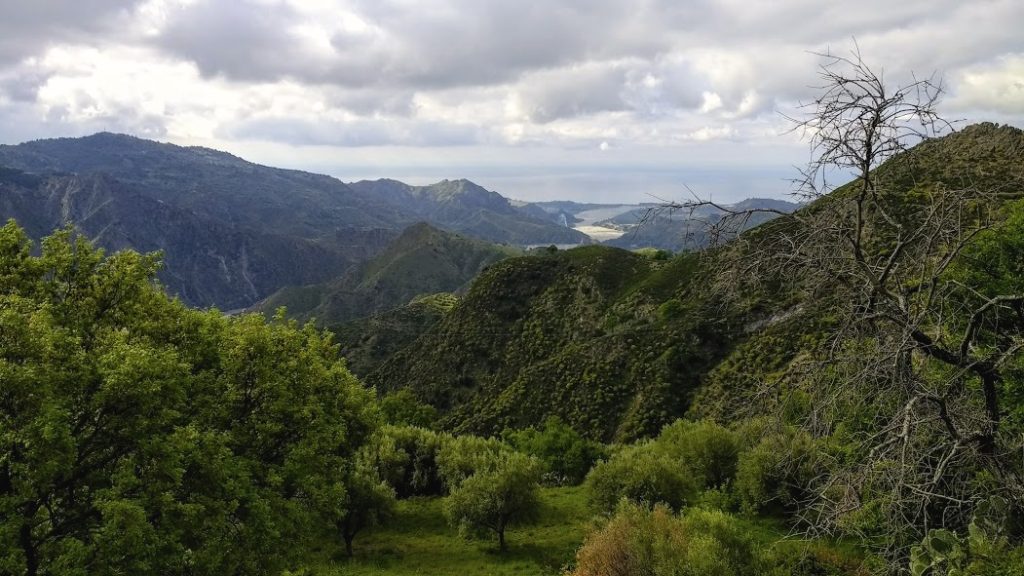
Countryside in the Province of Reggio Calabria
Thornbush scrub? From what I’ve seen, just about anything will grow on the tip of the peninsula. Take the bergamot, as just one example. The 100-mile stretch of coastline in the Province of Reggio Calabria is one of the few places on earth where the tree produces fruit, and Calabria’s bergamot oil is the best quality in the world. (See The Bergamot: Calabria’s Incredible Citrus.)
“The countryside looked like the aftermath of a disaster.” The region is poor and areas have undoubtedly suffered visually from lack of upkeep and illegal building practices. What I don’t understand is, with these “centuries of disaster,” how is Facebook full of gorgeous photos of the Calabrian countryside? Luckily, after the disaster, “a hard beauty to the place” was admitted by the author.
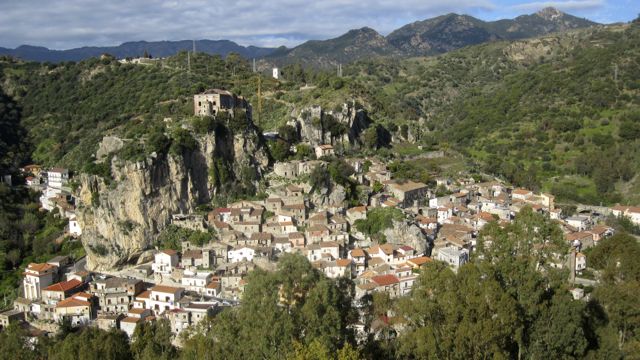
Palizzi, Calabria
WHAT IS THE MEZZOGIORNO?
When the New Yorker and the ‘Ndrangheta got done, the whole of the Mezzogiorno turned into “a dry, torpid expanse stretching from Abruzzo to Lampedusa.” Here, I ask myself whether or not all the umbrellas sold in South Italy are destined for the poor southerners to use on their London vacations.
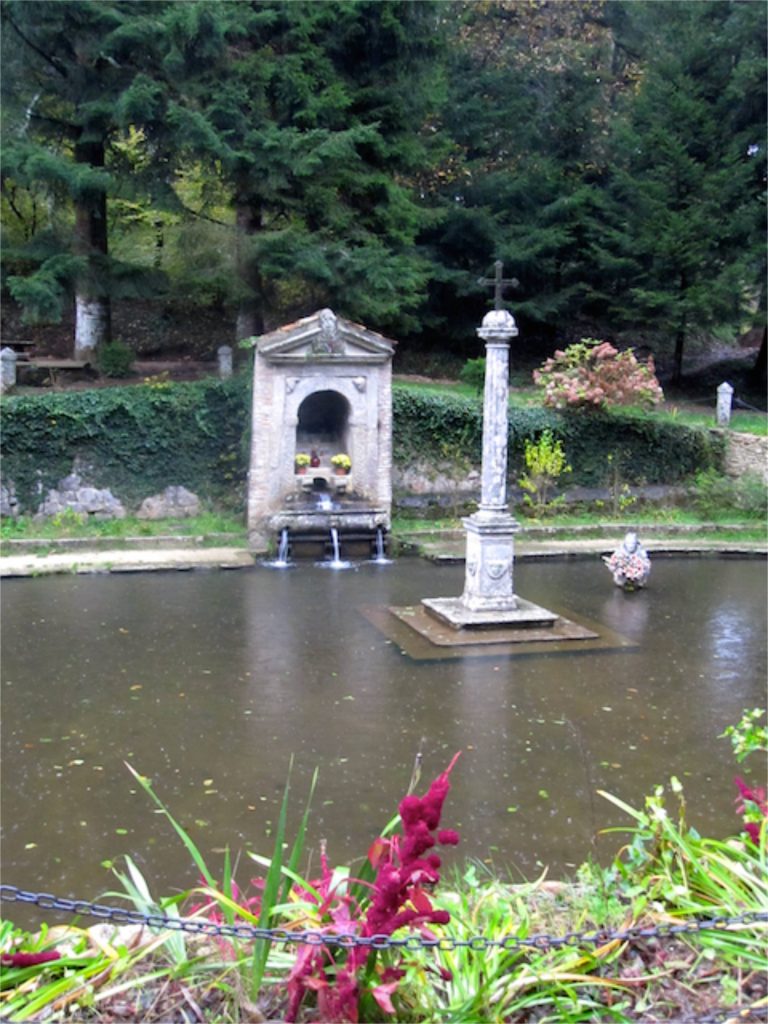
A rainy day in Serra San Bruno, Calabria
But what is this word Mezzogiorno? Literally meaning midday, which is its first definition, Mezzogiorno also signifies the southern compass point because it is the position in which the sun is at its highest as seen from the northern hemisphere. It was also an old mariner’s term for the south wind. In a geographical context, Mezzogiorno indicates the southern part of an area. In Italy, the Mezzogiorno encompasses the regions of Abruzzo, Basilicata, Calabria, Campania, Molise, Puglia, Sicily and Sardinia. And often, they are lumped together with a negative slant by those from the settentrione or northern parts, and in this case reiterated by the New Yorker magazine. Quite frankly, I was taken by surprise. (By the way, torpid means to be mentally or physically inactive…)
THE NEW YORKER AND THE ‘NDRANGHETA
Born into a crime family is something most of us haven’t experienced. Writer Alex Perry indicates that the poor treatment of women within the ‘Ndrangheta clans was a pivotal factor in these women turning on their villainous families and often repenting for their own shameful actions. Looking in from the outside, I couldn’t say what I would have done in the shoes of someone whose life is so foreign to civilized imagination. To rebel against formative brainwashing and face death for yourself, possibly your children and your dog at the hands of a family member must be daunting, particularly when raised with a code of unbreakable familial allegiance together with a disregard for what is considered normal moral behavior.
Do we need to understand these people to eradicate them? I think we do, and I applaud law enforcement and its prosecutors who work tirelessly in this endeavor. Just this week in Reggio Calabria, an anti-mafia protocol was signed to put in place a support network for the safety and systematic transfer of women and children from families of organized crime or victims of mafia violence.
It is refreshing to read an article that doesn’t glorify the mafia, but disparaging the southern half of a country doesn’t exactly help the situation move forward, either. Journalists need to study the environment in which the situation has arisen and be careful not to repeat assumptions and criticisms by those who had a hand in creating the atmosphere in which the criminal element was originally able to develop. So I would like to caution the reader of such articles and suggest a bit of fact checking. Half of Italy, a dry, torpid expanse? I think not.
Read Calabria: The Other Italy or click around my Italian blog for a broader picture of Calabria, which I assure you is full of good people and beautiful scenery. You might be surprised.
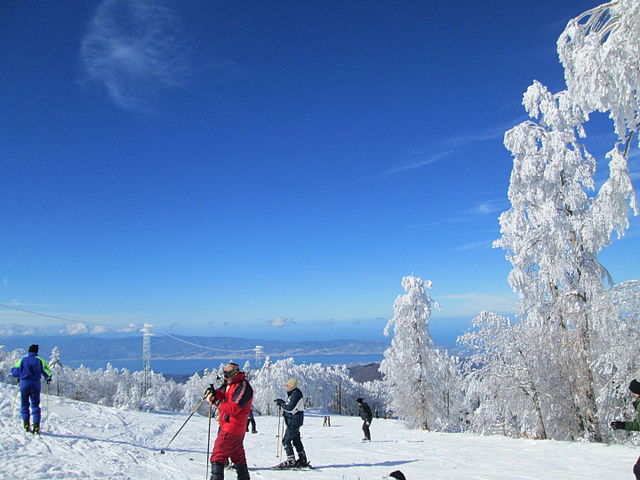
Skiing in Gambarie, Calabria with a view of the Strait of Messina (courtesy of Wikipedia Creative Commons, Domecost80)
For a description of the Calabrian mafia organization, see my blogpost The ‘Ndrangheta. Read more about this criminal organization in Calabria: The Other Italy, my non-fiction book about daily life, history, culture, art, food and society of the beautiful, fascinating and complex land in the toe of the Italian boot. Meet a few citizens of the region in the post My Italy Blog – Has It Been Two Years Already? or a couple of artists in The Ceramics of Seminara – In the Studio of Enzo Ferraro, An Artist in Amantea and MuSaBa: Not Just A Museum.
Last year Calabria was the only Italian region to be selected for the New York Times’ list “52 Places to Go in 2017” – read about it on my post VISIT CALABRIA Says the NY Times!
“Like” Calabria: The Other Italy’s Facebook page and follow me on Karen’s Instagram and Karen’s Twitter for more beautiful pictures and information.
Sign up below to receive the next blog post for free directly to your email.
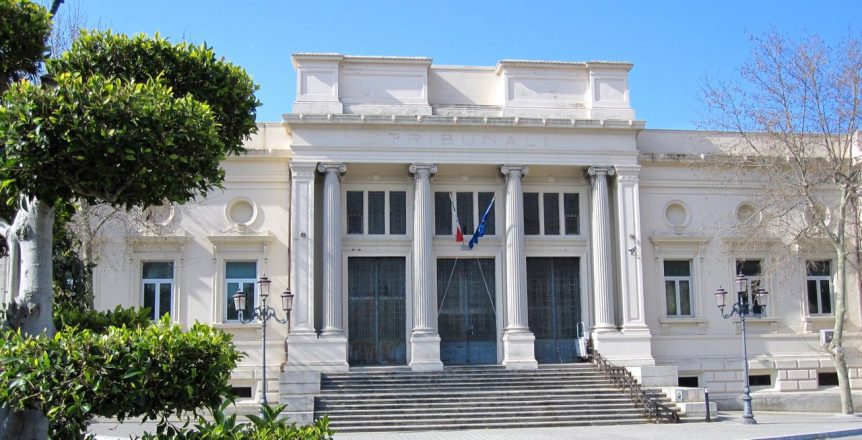
Comments 16
Clearly the “little more than thornbush scrub and mountains” as seen from your many photos of the area is a gorgeous and stunning landscape anyone would think themselves lucky to live in. I think the cause of justice and Calabria would have been better served if the article focused on the bravery of these women and trying to understand the support system required to undertake such courageous action.
Author
Absolutely. Thank you for your comment.
We return to Calabria every year, after first visiting in 2005 and really falling for this laid-back region with — as its number one asset — friendly, sincere, and sharing people who are very proud of their region and culture.
As for the mezzogiorno, all I can say is that the further south you go in Italia, the better the food, the bread, the caffe, the vegetables, and, yes, the ocean. Our friends who have gone there are always amazed by the varied, beautiful blue shades of the sea … and the warmth of the people they encounter.
We usually stick to the coast of the Golfo di San Eufemia, but last year we drove in to Cosenza and had a great time walking around the old part of town and eating at a great bistro. How did we know what to do? The owner of the little bar by the church in our little town of Marina di Nocera gave us her daughter’s phone number, and she met us there and gave us a tour.
My wife loves Roma, and I treasure Napoli and nearby Pozzuoli, but Calabria is where we spend the most time when we go to Italia.
Author
Yes, the warm people, a great asset, one of many, each one to be appreciated, which you have been doing for many years. Thank you for the wonderful testimonial that reflects your broad Italian experience.
Dear Karen
your blog shows that the author got the physical landscape wrong. But I think he also got the social landscape wrong. To me it reads like a cliche’ film from the 1950s. Yes, ‘Ndrangheta there may still be but I am not aware of many teenagers eloping, and the article did not give any reason why all those 14/15 yrs old girls eloped, as far as I remember. Indeed these days all those girls are likely to be in high school and aspire to have degrees and their own mothers may have degrees. As for the hope/dream that the women may get rid of the ‘Ndrangheta, I would say forget it. Much, much more is needed for that dream to come through.
Author
Yes, for me, the “populated by shepherds and small-boat fishermen” summed up the social distortion, and you’re right, it’s straight out of a neorealist film. School is now obligatory until age 16 and I believe that is also the age a minor can legally marry. The New Yorker article is a simplified view of a very complex situation. I would like to think, though, that every little bit in the right direction can help.
Great article and I’m sure many Calabrese appreciate you telling another side.
I’ve been living in Cosenza for some 18 months now and also write many posts on this region (and Italy) – I’m discovering more and more wonderful things to do in Calabria.
Over this period, we’ve had many visitors all of which say they would love to live here as this region has everything: incredibly fresh and diverse produce, coffee, delicious cuisine, super-friendly locals that go above and beyond to help with anything, wonderful history, and spectacular scenery.
Am I biased? You may think so, but then again, I’ve also travelled to 60+ countries in 6 continents over 33 years, so perhaps I know a wonderful region when I see it 😉
Author
You certainly have traveled all over the globe, and your experience speaks volumes. Thank you for your affirmation of the region.
Let me say that we took our family to Calabria in 2006. It was a heart-warming and beautiful visit we had. The people,(so genuine and friendly)the food (simply delicious) and the country (so beautiful) made for a spectacular time and vist.
I for one am so tired of news sources, authors, trying to depict Italians in a bad light. Concentrate on what Italy has given the world.
Also want to say that Serra San Bruno was one of pure beauty to us.
Author
So glad to hear of your lovely vacation in Calabria. The woods of Serra San Bruno really do have a special atmosphere.
Calabria is an incredible region that is overflowing with good people, amazing cuisine, breathtaking landscapes and unique artisan goods. It breaks my heart that so many look at this area of Italy and the only thing they can talk about is the mafia. If only media would stop perpetuating this idea – yes the mafia exists here, yes it’s a constant struggle, but it is absolutely not the core of what Calabria is.
And I’d really like to know if this writer has ever actually been to Calabria?! A thornbus? Really?
Completely clueless.
Author
Yes, I wondered that, too. In smaller letters above the title of the article, it said, “Letter from Calabria.” Maybe there’s a town in England called Calabria… And apparently, this article is a preview of his book that will be coming out in a few months.
I stopped reading the New Yorker years ago. Very biased, often misinformed articles. Did the New Yorker article you are referring to mention the length of time the author spent in Calabria before writing the article? Yes, I did read that Calabria made the 2017 places in the world to visit list from the New York Times, where it was pointed out that recommendations came from journalists who lived/stayed in these places for extended periods of time. I guess no surprise here!
Author
No mention in the article as to the length of time, if any, the author spent in Calabria or South Italy. Perhaps the full-length book will have those details although I won’t be bothering to find that out. I’ve read more than enough in his New Yorker piece that undoubtedly was written to entice sales… Thank you for your thoughts, Kathryn.
Thank you for your blog, book, and thoughtful analysis of the New Yorker’s sloppy investigative journalism. The quotes from the article are completely foreign to me and would be to anyone who has visited the Sila or the beautiful seaside towns such as Amantea. I get it, stories about crime syndicates sell papers – I’m grateful articles about Calabrian life, art, and beauty also exist. As a former New Yorker – I can tell you, it would be very easy to disproportionately portray any part of the five boroughs in a less than flattering light and ignore the overwhelming positives the area has to offer.
Author
I grew up in the “Garden State,” so I understand first hand your apt comparison. Balance and shall we also add, honesty, are important. Thank you for your kind appreciation of my work.